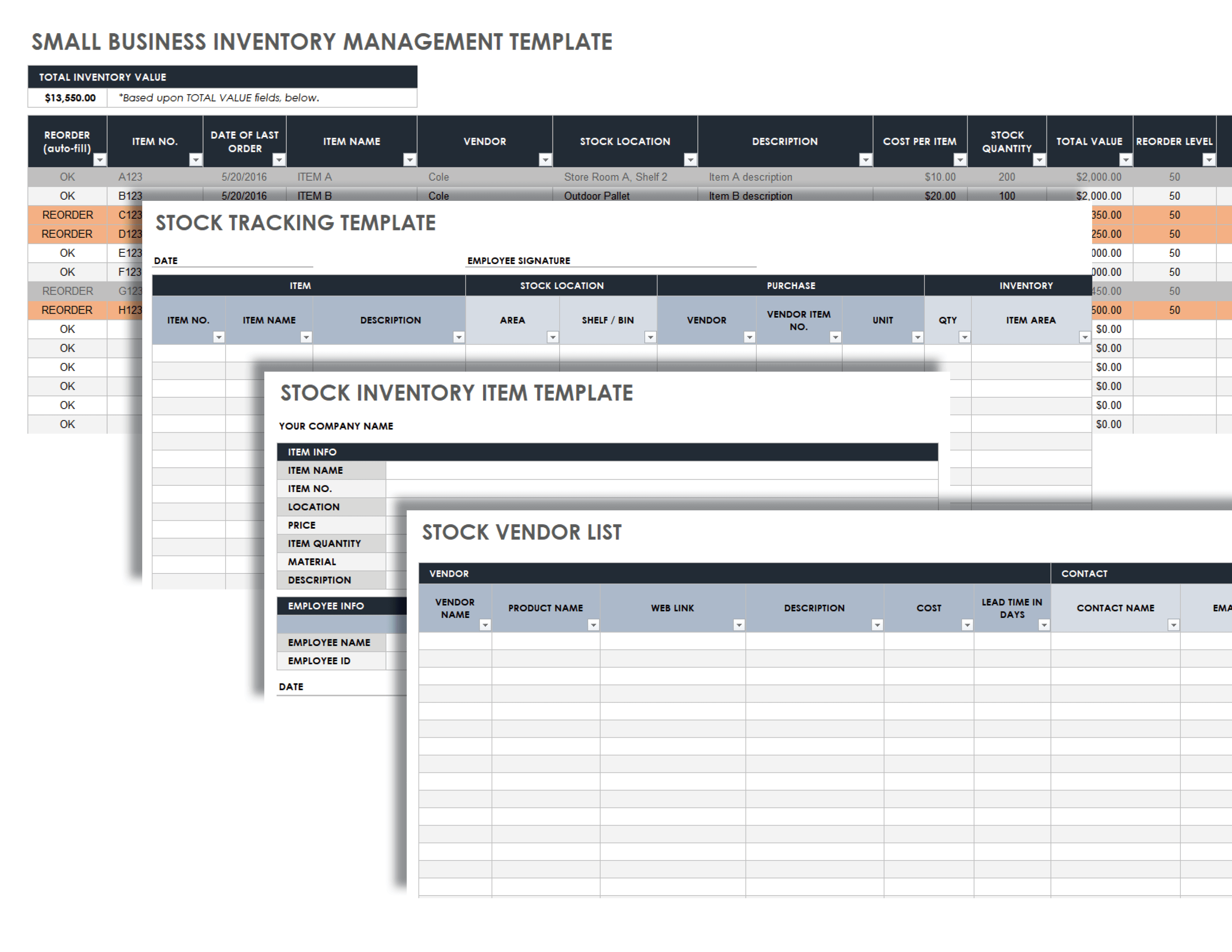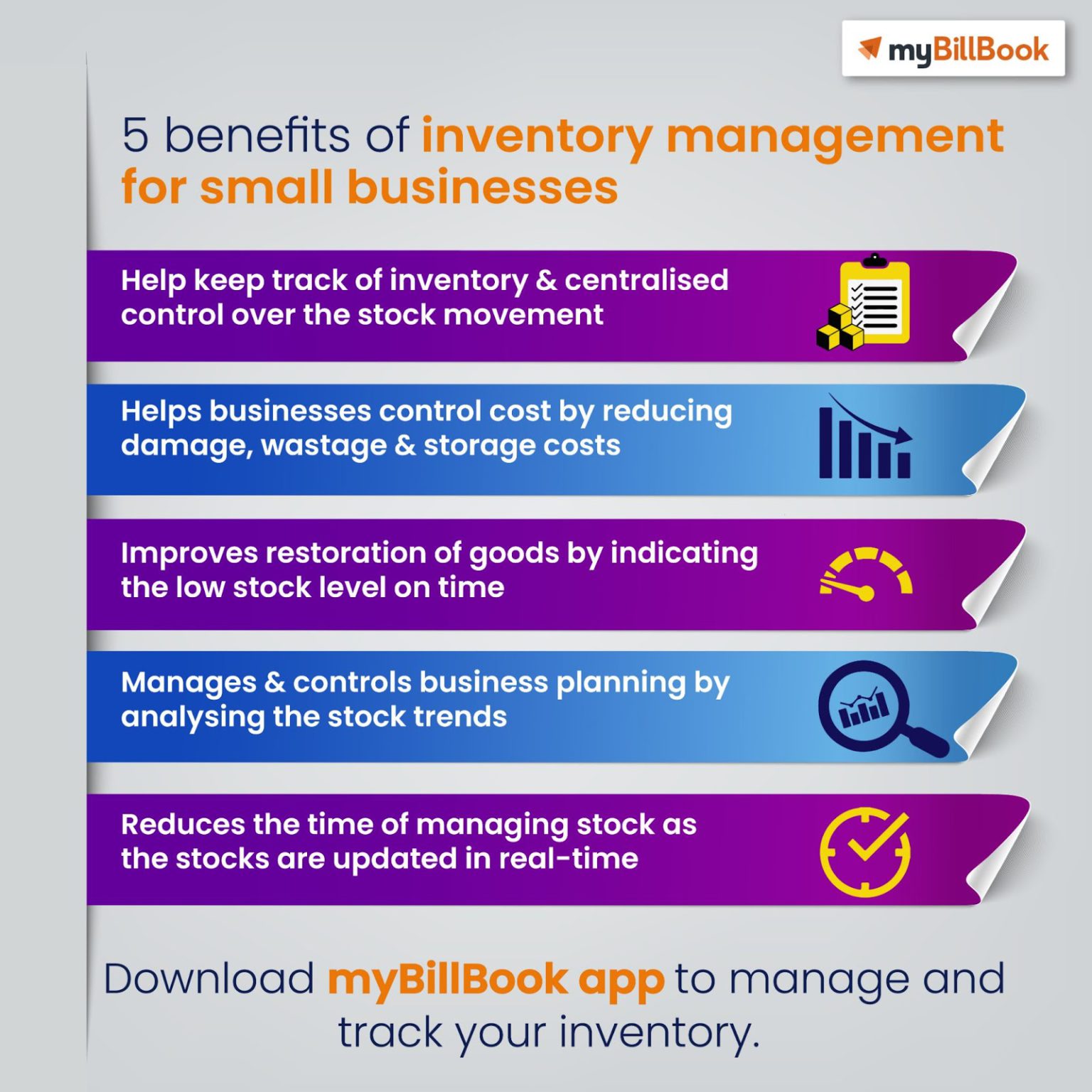Inventory management small business is a crucial aspect of running a successful enterprise. It involves the efficient management of the flow of goods from suppliers to customers, ensuring that the right products are available at the right time and in the right quantity.
Effective inventory management can lead to significant cost savings, improved customer service, and increased profitability for small businesses.
In this comprehensive guide, we will explore the fundamentals of inventory management, the challenges faced by small businesses, and best practices for optimizing inventory levels. We will also discuss the benefits of using inventory management software and emerging trends in the field.
Inventory Management Basics for Small Businesses

Inventory management is crucial for small businesses as it involves the efficient tracking and management of goods, materials, and finished products. Effective inventory management ensures that businesses have the right products, in the right quantities, and at the right time to meet customer demand while minimizing waste and costs.
Types of Inventory
There are different types of inventory that small businesses may hold, including:
Raw materials
Unprocessed materials used in the production of finished goods.
Work-in-progress
Partially completed goods in the production process.
Finished goods
Completed products ready for sale to customers.
Maintenance, repair, and operations (MRO) inventory
Items used for maintenance and repairs, such as tools, spare parts, and supplies.
Safety stock
Additional inventory held as a buffer to protect against unexpected fluctuations in demand or supply.
Benefits of Effective Inventory Management
Effective inventory management offers numerous benefits for small businesses:
Cost savings
Reduced storage costs, lower wastage, and improved purchasing efficiency.
Improved customer service
Reduced stockouts, faster order fulfillment, and increased customer satisfaction.
Enhanced decision-making
Accurate inventory data supports informed decisions on production, purchasing, and marketing.
Increased efficiency
Streamlined inventory processes, reduced labor costs, and improved productivity.
Better cash flow
Reduced inventory holding costs and improved inventory turnover, freeing up cash for other business operations.
Inventory Management Challenges for Small Businesses
Managing inventory efficiently is crucial for small businesses, yet it often poses significant challenges. These challenges can hinder growth, profitability, and customer satisfaction.
Common challenges include:
- Limited resources:Small businesses often operate with limited budgets, staffing, and storage space, making it difficult to maintain optimal inventory levels.
- Lack of expertise:Inventory management requires specialized knowledge and experience, which may be lacking in small businesses.
- Rapidly changing demand:Small businesses may face unpredictable demand fluctuations, making it difficult to forecast inventory needs accurately.
Impact of Poor Inventory Management
Ineffective inventory management can have severe consequences for small businesses:
- Lost sales:Stockouts can lead to lost sales and dissatisfied customers.
- Increased costs:Overstocking can tie up capital, increase storage costs, and lead to spoilage or obsolescence.
- Operational inefficiencies:Poor inventory management can disrupt production and distribution processes, reducing efficiency.
Success Stories, Inventory management small business
Despite these challenges, many small businesses have successfully overcome inventory management hurdles. Examples include:
- Etsy:The online marketplace implemented an inventory management system that allows sellers to track and manage their stock in real-time.
- Warby Parker:The eyewear retailer uses a lean inventory model that minimizes waste and optimizes stock levels.
- Birchbox:The subscription box service leverages data analytics to forecast demand and maintain optimal inventory levels.
Best Practices for Inventory Management in Small Businesses

Efficient inventory management is crucial for small businesses to optimize operations, reduce costs, and enhance customer satisfaction. Implementing a structured approach to inventory management can help businesses gain better control over their stock, minimize waste, and improve overall profitability.
Here’s a step-by-step guide to effective inventory management for small businesses:
Establish a Centralized Inventory System
Maintain a centralized database or software that tracks all inventory items, including their quantities, locations, and costs. This system should be accessible to all authorized personnel to ensure accurate and up-to-date information.
Implement Accurate Inventory Tracking
Regularly conduct physical inventory counts to verify the accuracy of your inventory records. Use barcode scanners or other technology to automate the process and minimize errors. Discrepancies between physical counts and inventory records should be investigated and resolved promptly.
Choose an Inventory Management Technique
Select an inventory management technique that aligns with your business needs. Common methods include:
- First-In, First-Out (FIFO):Assumes that the oldest inventory items are sold first.
- Last-In, First-Out (LIFO):Assumes that the most recently acquired inventory items are sold first.
- Weighted Average Cost:Calculates the average cost of inventory items based on their purchase prices and quantities.
Optimize Inventory Levels
Determine optimal inventory levels to avoid overstocking or understocking. Consider factors such as demand patterns, lead times, and storage costs. Use inventory forecasting techniques to predict future demand and adjust inventory levels accordingly.
Minimize Waste
Implement strategies to reduce inventory waste, such as:
- Just-in-Time (JIT) Inventory:Only order inventory when it is needed to minimize holding costs and reduce the risk of obsolescence.
- Consignment Inventory:Allow suppliers to store inventory at your facility and only pay for items when they are sold.
- Regular Inventory Audits:Identify slow-moving or obsolete inventory and take steps to sell or dispose of it.
Inventory Management Software for Small Businesses

Inventory management software is a powerful tool that can help small businesses streamline their operations, reduce costs, and improve customer service. By automating many of the tasks associated with inventory management, such as tracking stock levels, reordering products, and generating reports, inventory management software can free up small business owners to focus on more strategic initiatives.
Benefits of Inventory Management Software for Small Businesses
- Improved accuracy: Inventory management software can help small businesses improve the accuracy of their inventory records, which can lead to reduced losses due to overstocking or understocking.
- Reduced costs: Inventory management software can help small businesses reduce costs by optimizing their inventory levels and identifying opportunities for discounts.
- Improved customer service: Inventory management software can help small businesses improve customer service by ensuring that they always have the products that their customers want in stock.
- Increased efficiency: Inventory management software can help small businesses increase efficiency by automating many of the tasks associated with inventory management.
Comparison of Different Inventory Management Software Solutions
There are a number of different inventory management software solutions available on the market, each with its own unique features and pricing. Some of the most popular inventory management software solutions for small businesses include:
| Software | Features | Pricing |
|---|---|---|
| SkuVault | – Cloud-based inventory management software
|
– Starting at $199 per month |
| Fishbowl Inventory | – On-premises inventory management software
|
– Starting at $499 per user |
| QuickBooks Commerce | – Cloud-based inventory management software
|
– Starting at $49 per month |
Selecting the Right Inventory Management Software for a Small Business
When selecting an inventory management software solution for a small business, it is important to consider the following factors:
- The size of your business: The size of your business will determine the features and functionality that you need in an inventory management software solution.
- The type of products you sell: The type of products you sell will also determine the features and functionality that you need in an inventory management software solution.
- Your budget: The cost of inventory management software can vary significantly, so it is important to set a budget before you start shopping.
Inventory Management Trends for Small Businesses: Inventory Management Small Business

Inventory management is constantly evolving, and small businesses need to stay up-to-date on the latest trends to remain competitive. Technology is playing an increasingly important role in inventory management, and small businesses can leverage these trends to improve their efficiency and accuracy.
Technology Trends
- Cloud-based inventory management software:Cloud-based software allows small businesses to access their inventory data from anywhere, at any time. This can be a major advantage for businesses that have multiple locations or employees who work remotely.
- Radio frequency identification (RFID):RFID tags can be attached to inventory items to track their location and movement. This can help businesses to improve their inventory accuracy and reduce losses due to theft or misplacement.
- Artificial intelligence (AI):AI can be used to automate many tasks associated with inventory management, such as forecasting demand and optimizing inventory levels. This can free up small business owners to focus on other aspects of their business.
Ending Remarks

By implementing effective inventory management strategies, small businesses can gain a competitive edge, reduce costs, and improve customer satisfaction. By leveraging technology and staying abreast of industry trends, small businesses can transform their inventory management practices and unlock their full potential for growth.
Query Resolution
What is inventory management?
Inventory management is the process of tracking and managing the flow of goods from suppliers to customers. It involves forecasting demand, determining optimal inventory levels, and ensuring that products are available when and where they are needed.
Why is inventory management important for small businesses?
Effective inventory management can help small businesses reduce costs, improve customer service, and increase profitability. By optimizing inventory levels, businesses can avoid overstocking and understocking, which can lead to lost sales and increased expenses.
What are some common inventory management challenges faced by small businesses?
Small businesses often face challenges such as limited resources, lack of expertise, and unpredictable demand. These challenges can make it difficult to maintain optimal inventory levels and avoid stockouts or overstocking.
How can small businesses overcome inventory management challenges?
Small businesses can overcome inventory management challenges by implementing best practices such as accurate inventory tracking, using inventory management software, and leveraging technology to automate processes and improve efficiency.